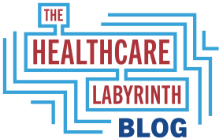
Election Update And The Potential Role of Healthcare Issues
While healthcare has been displaced by other economic issues and immigration as the compelling Election 24 issues of the day, I have taken the position that healthcare could very well play a role in this year’s election outcome. How so? How close is it? Let’s take a look at how close things are for the presidency and the houses of Congress. For reliable forecasts on elections, I always go to at RealClear Politics. It is very reliable and unbiased. I also like the fact it uses polling averages to determine the current prospects of various political contenders. In addition, I have a special connection as its publishing arm, RealClear Publishing, was one of the publishers of my book, The Healthcare Labyrinth (available via this site). I went to RealClear Politics for the presidential and Senate races and looked at a few other sources for the House races. Presidential race –













